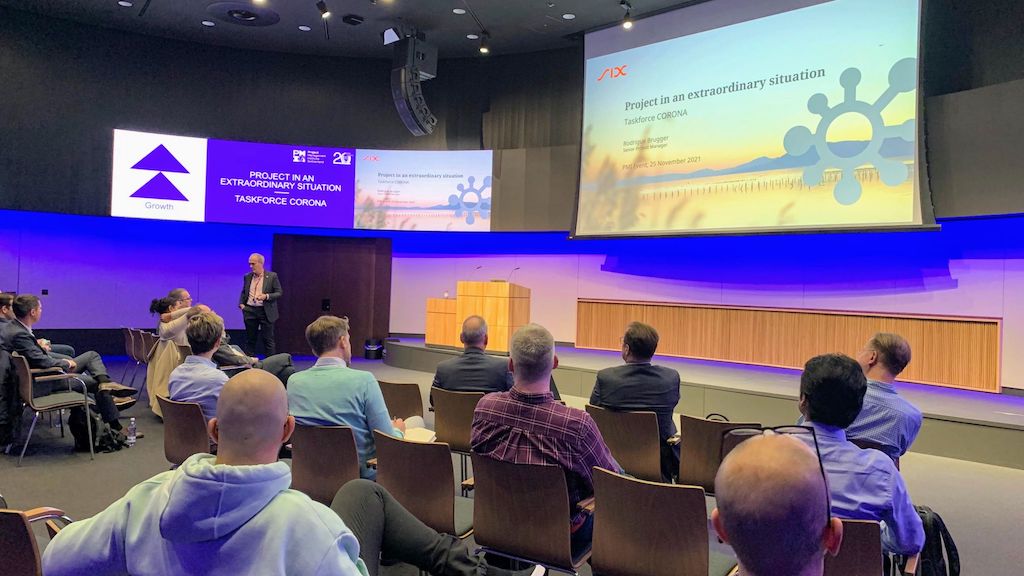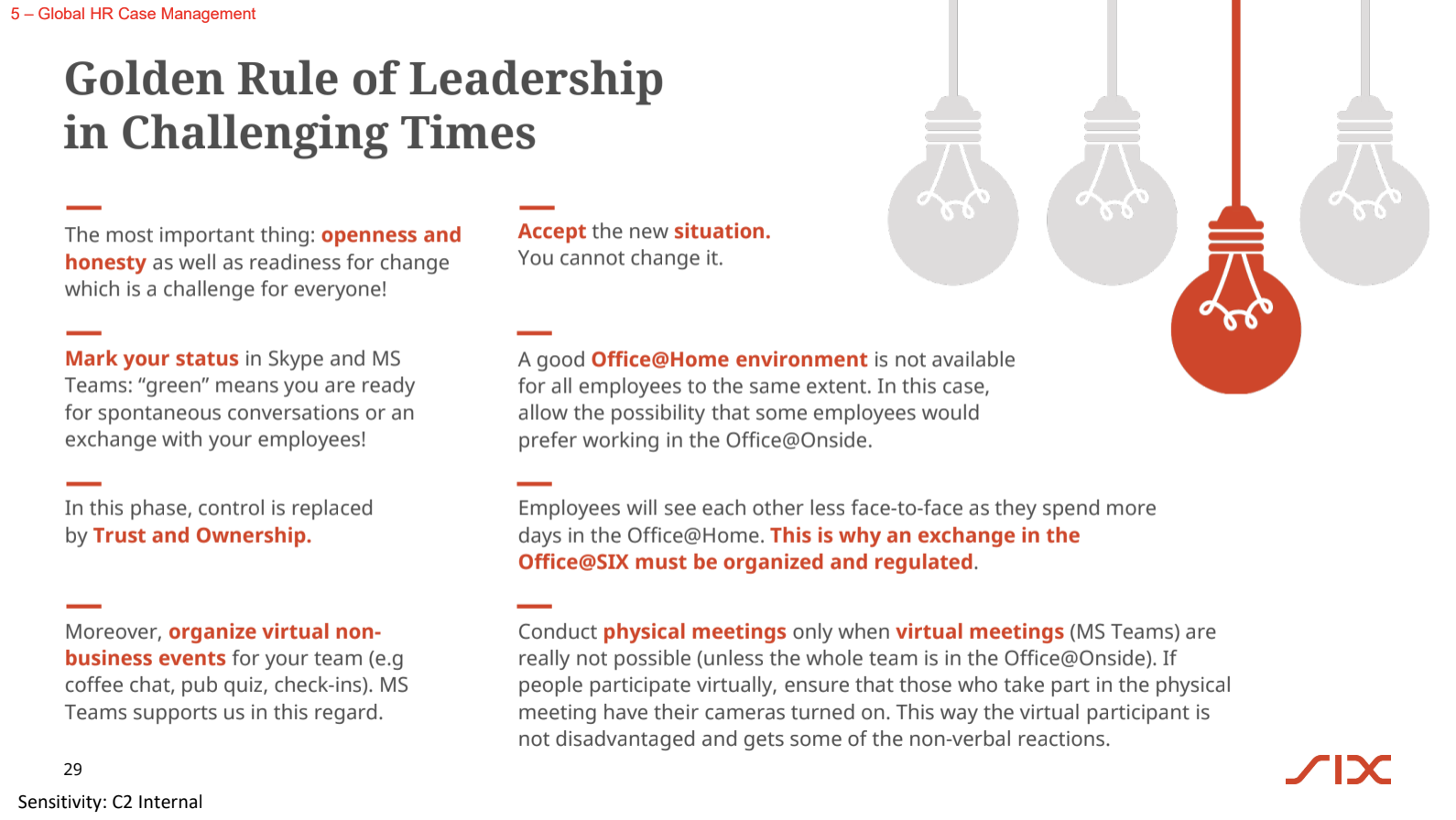Author: Valérie Pierre, PMP

When was the last time you attended a professional event in which you enjoyed every single bit of it? On 25 November 2021, Rodrigue R.R. Brugger, Head Global HR Case Management and Core Member Task Force Corona SIX, alias “Senior project manager” of the Taskforce, captivated the full attention of his audience in Six’s convention center while telling his report from 1 ½ years of Six’s Taskforce Corona.

First, let’s review what was the starting position: in January 2020, an infectious disease outbreak evolved into an epidemic in China and the World Health Organization (WHO) proposed the name COVID-19 (coronavirus disease 2019) for it. It is interesting to note that Six, as Switzerland’s systemically important financial market infrastructure responsible for the uninterrupted access to mission-critical financial systems, had the first consultation of SIX Pandemic Advisory Group as early as the end of January 2020, to discuss the current situation and immediate measures for COVID-19.
The taskforce which was constituted faced several challenges. None of the members knew what was approaching and what tasks they’d have to do. However they all expected the volume would be demanding and were committed to the mission. There was no end in sight for the planning and the project work.
What’s probably one of the most important pieces of the strategy was the organizational chart of the taskforce, who’s responsible for what, who’s the back-up person, etc. Here are a few elements of that diagram that stuck in my mind. An intelligence/situation cell was created to extract from the news what was relevant to Six. A contingency planning group was in charge of thinking about the future. The role of logistics was of course so essential, creating new building security measures, delivering masks, etc. Information and communication was also key, just to name a few of the teams. And none of this would have worked without the support of the CFO.
The method and tools were clarified beforehand, so that in case of a crisis quick action can be taken as well as a lot can be worked off. REDCON levels and risk heat maps were used. REDCON is short for Readiness Condition and is used to refer to a unit's readiness to respond to and engage in combat operations. The level was continuously assessed and re-evaluated as the situation changed. The level 5 was reached during 2 periods, and as of November 25th 2021, level is back at REDCON 3.

While this approach corresponds to a waterfall type of project management, Agile methods were also used, and above all “Agile thinking”. In the times of a pandemic, you can’t plan, nor be really prepared. Tthe key competence is the ability to react to changes at any time and to adapt your approach in a flexible manner.
It was very interesting to review the “Golden leadership rules in challenging times”. Most of those are probably applied in other companies, but possibly without being formalized. If there’s one that naturally stands out and that probably resonates for each one of us: “Accept the new situation. You cannot change it.” To read more on those, check out Rodrigue’s slides.

Overall, we learned from this insightful retrospective overview not only how the Taskforce operated, but also how much almost two years of intense collaboration strengthened the bonds between the Taskforce members.
The power of human connection is what you could feel when joining the #Apero after the presentation. On this #Thanksgiving2021 day, stories were buzzing around. My thanks go to the PMI organizing team, Prasanth Nair, Ethel Mendocilla Sato, Christopher Ziemba, Six team, Rodrigue R.R. Brugger, Martin Härri and everyone else who was there or helped make this in-person event happen.